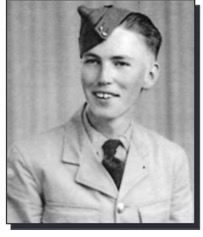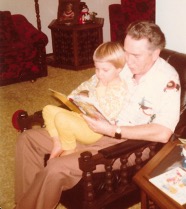The Personal Inspiration Behind The Paris Apartment

From as far back as I can remember, history— and especially the history wound through the branches of my own family tree— has always been a source of fascination for me. As such, I am often the recipient of “old things” found in relatives’ basements and attics, an eclectic array of items boxed and marked with a label that always reads “For Kelly.”
A number of years ago, one of those boxes that came into my possession contained the diary of my great-uncle, Private Percy William Shields, killed in action on the battlefields of France on September 9, 1918, age 25. In his diary, Pte. Shields wrote in great detail about his wartime experience, offering the reader a vivid glimpse into what he endured during World War 1.

Except they did exist, of course, and even if my grandfather did not speak of them directly, he did share his service in the RCEME with me in a way that I didn’t recognize until I was much older. By the time I was ten, I could read radio schematics and identify and solder the correct capacitor, resistor, or transistor into place. Together we rebuilt a hulking ‘38 RCA Victor and a pretty ’42 Northern Electric, the latter which he presented to me for my thirteenth birthday.
Those hours fueled my fascination with radios and their many uses during the war, and I found the stories of the individuals who relied on those radios to send vital and clandestine information back to the Allies riveting. The fictional characters of Sophie Seymour and Estelle Allard in The Paris Apartment are based on the very real lives of Pearl Witherington Cornioley, Virginia Hall, Christine Granville, Nancy Wake, Josephine Baker, and Andrée de Jongh.

In 2018, I stumbled across the story of a Paris apartment found locked and untouched since World War II when its owner, Mme. De Florian fled the occupying Nazis, never to return. I became transfixed by the questions that discovery provoked, and the similarities that were reflected in my own family tree. What makes people choose to either share or keep private an experience that so drastically impacts their life? Is it better to share such an experience in detail with those left behind the way my great-uncle did in his diary? Or is it better to leave the past sealed, sharing only aptitude from those years, the way my grandfather did with me?
There is no right or wrong answer to any of those questions, and the characters in The Paris Apartment must make their own choices, for their own reasons. And for those who come behind, for those lucky enough to uncover the sacrifice and the courage of the generations before them, do those reasons matter?
Perhaps.
And perhaps not.
2017, London: When Aurelia Leclaire inherits an opulent Paris apartment, she is shocked to discover her grandmother’s hidden secrets—including a treasure trove of famous art and couture gowns. One obscure painting leads her to Gabriel Seymour, a highly respected art restorer with his own mysterious past. Together they attempt to uncover the truths concealed within the apartment’s walls.
Paris, 1942: The Germans may occupy the City of Lights, but glamorous Estelle Allard flourishes in a world separate from the hardships of war. Yet when the Nazis come for her friends, Estelle doesn’t hesitate to help those she holds dear, no matter the cost. As she works against the forces intent on destroying her loved ones, she can’t know that her actions will have ramifications for generations to come.
Set seventy-five years apart, against a perilous and a prosperous Paris, both Estelle and Lia must summon hidden courage as they navigate the dangers of a changing world, altering history—and their family’s futures—forever.
